For this furniture design project, we were tasked with exploring an existing material or manufacturing process in a new and interesting way.
9 Weeks
Concept design, pattern design, physical prototyping, finishing
Frank Lloyd Wright was a Modernist architect best known for designing the iconic Fallingwater house. Aesthetically, his work was characterized by strong lines, interplay of materials, and large geometric stained glass panels. This project was specifically inspired by his Saguaro Pattern design.
How might we convey a sense of movement through material or form?
How could I use a thousand-year-old material in a new way?
How could a piece of furniture interact with its environment?
The "waterfall" stained glass pattern was inspired by Wright's "Saguaro". I sought to achieve an interesting play of movement. This is achieved by balancing long, linear pieces with contrasting pieces that draw the eye around the pattern.
It took a while to get this exactly right, for several reasons:
Due to the interior structure needed to support and protect each piece of glass, the pattern is more complex than it looks at first glance.
I chose laser-cutting for precision and speed. This would ensure that I could create a layered structure for the table legs. However, this did require a lot of testing and tweaking to get right.
The design allows for easy disassembly for transport or repair, while concealing the necessary hardware to avoid interrupting the pattern.
.png)
Test cut showing the layers needed to accommodate glass pattern:
🔵 = Visible section of stained glass from assembled piece; for cohesion, the visible shapes of the pattern are all 1/4" (6mm) apart.
🟢 = Actual size of each piece of glass within frame
🔴 = Additional space allotted within the frame for each piece
🟡 = Space between each allotment, protecting each piece within its own segment.
Each piece was secured with a small dot of rubber cement for padding.
I chose walnut for the structure, but the glass palette was more challenging. Glass shifts with lighting conditions, so I compared with several palettes. The final selection of blues and greens looks beautiful in any setting.
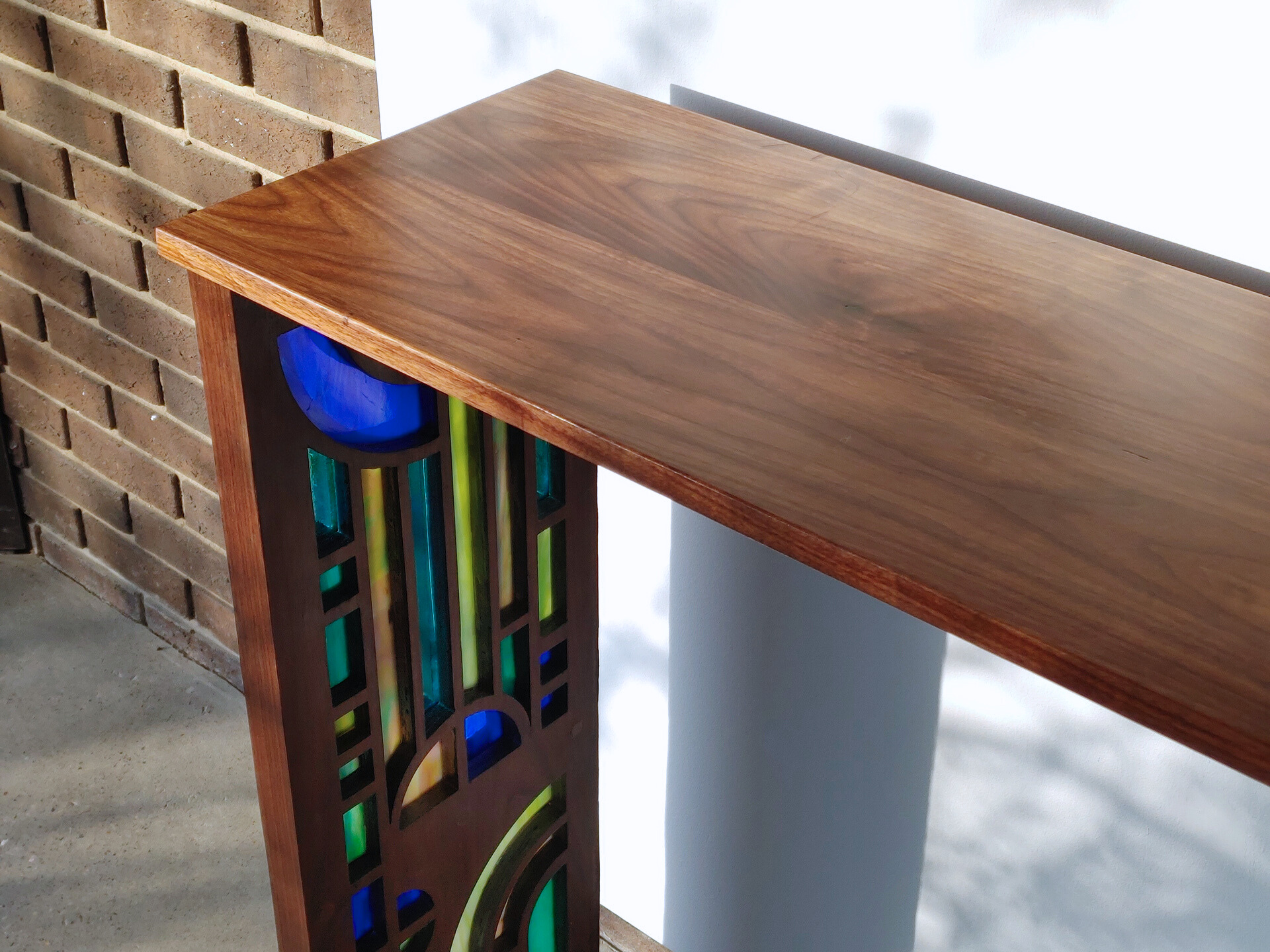
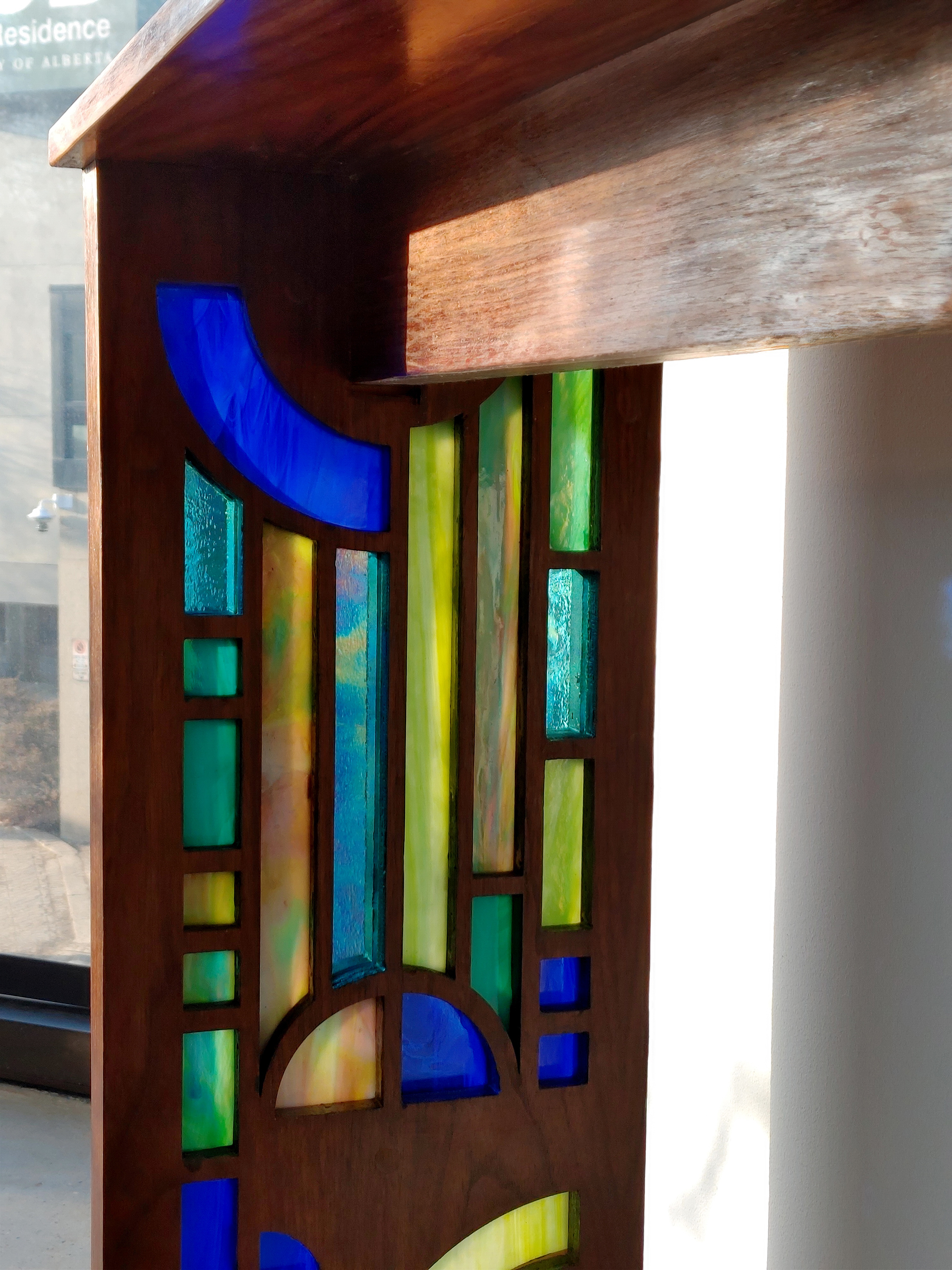

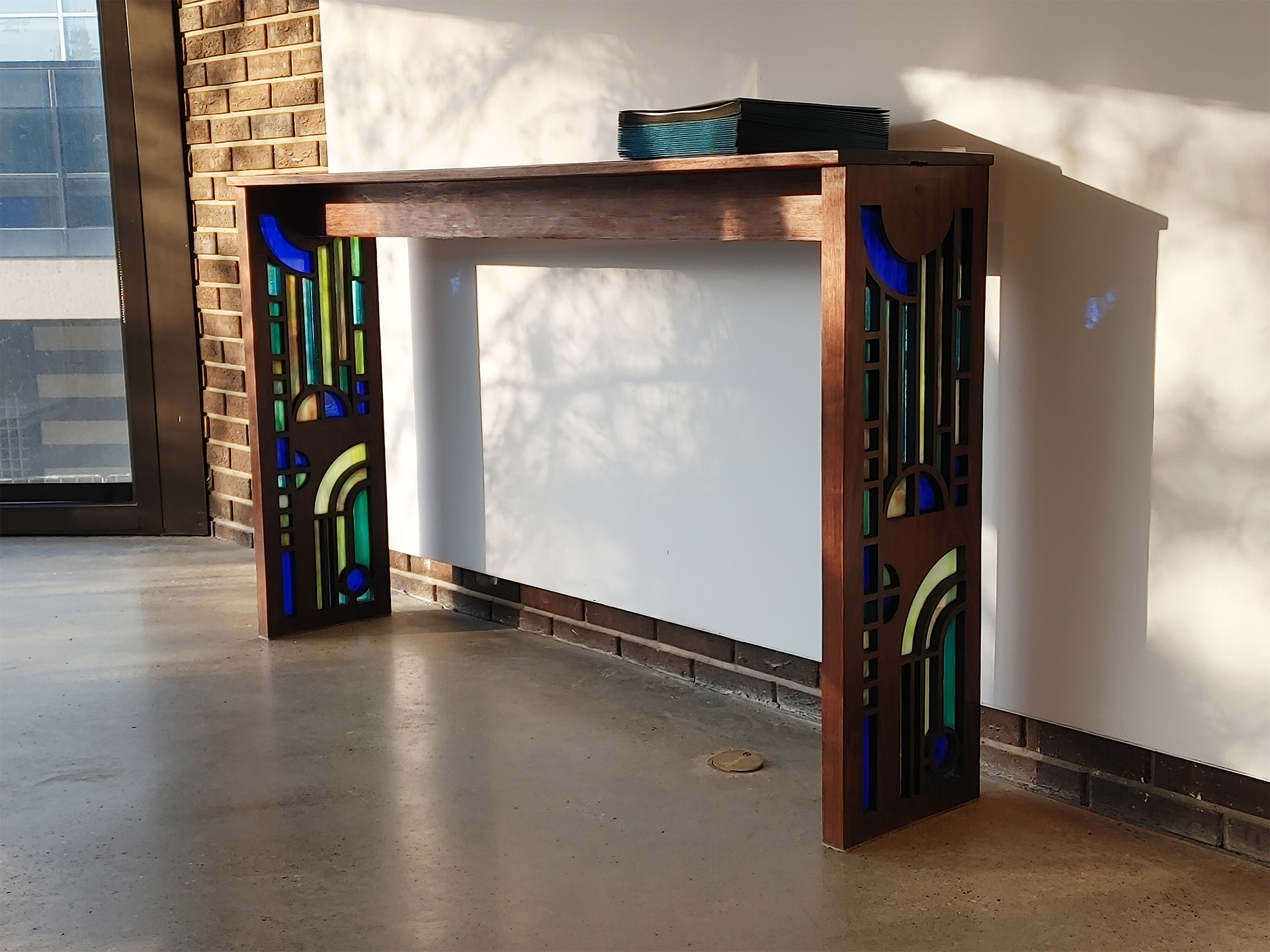
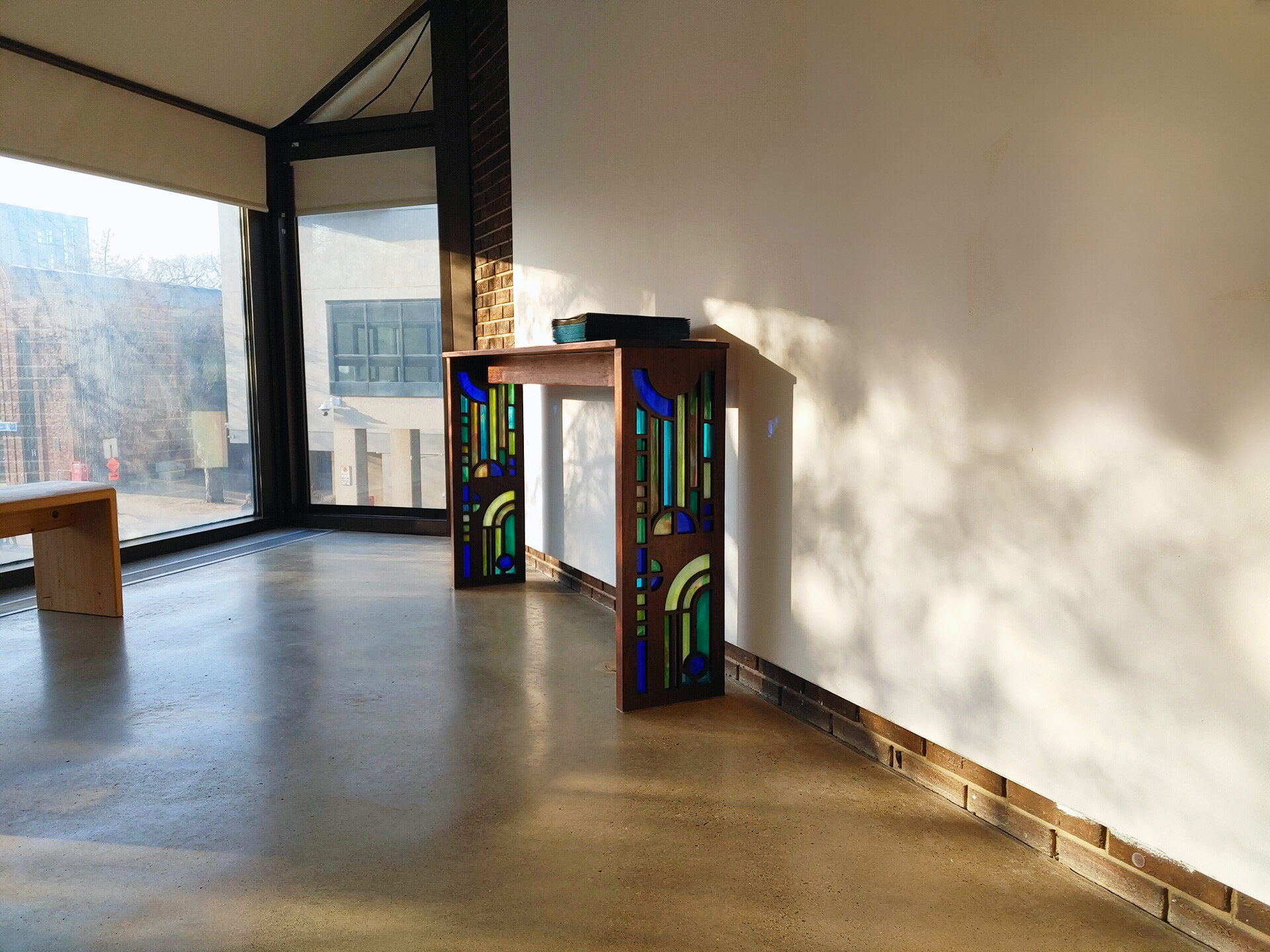
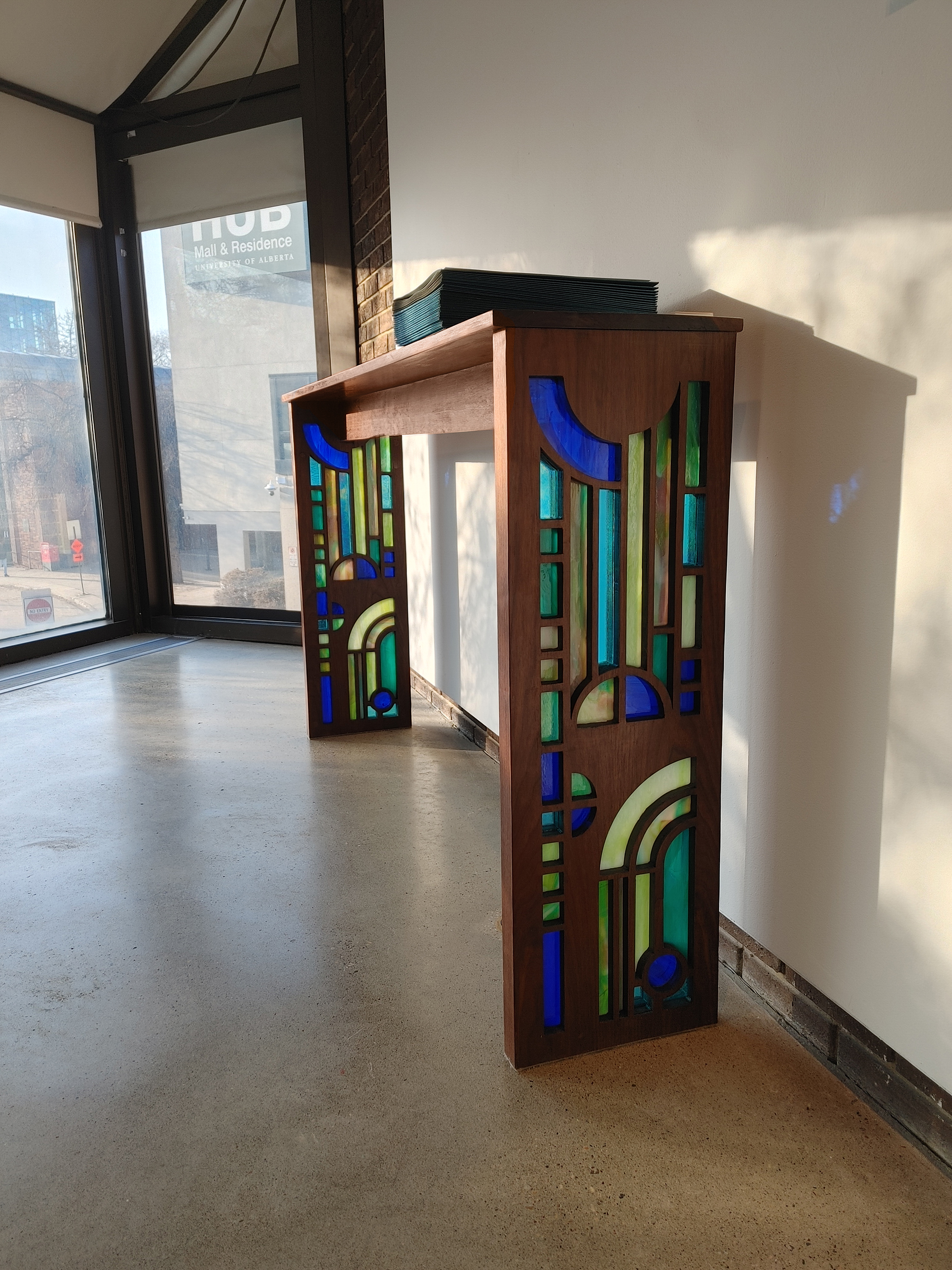
When I sketched this, I had no idea how to make it. I considered changing direction several times, but I'm so glad I didn't. The end result was deeply rewarding, and I learned so much about the prototyping process along the way.
I couldn't have completed this project without the input of my professor and Industrial Design shop technicians. I also got useful feedback from fellow students. I have a tendency to try and figure everything out by myself; this project was a reminder that design is a community.
An open brief is easier because it allows for more flexibility. Following through on this concept with specific constraints forced me to think differently. Between the concept itself and managing all the moving parts (different pieces being crafted concurrently). I learned to better communicate, budget for error, and have backup-backup-plans.